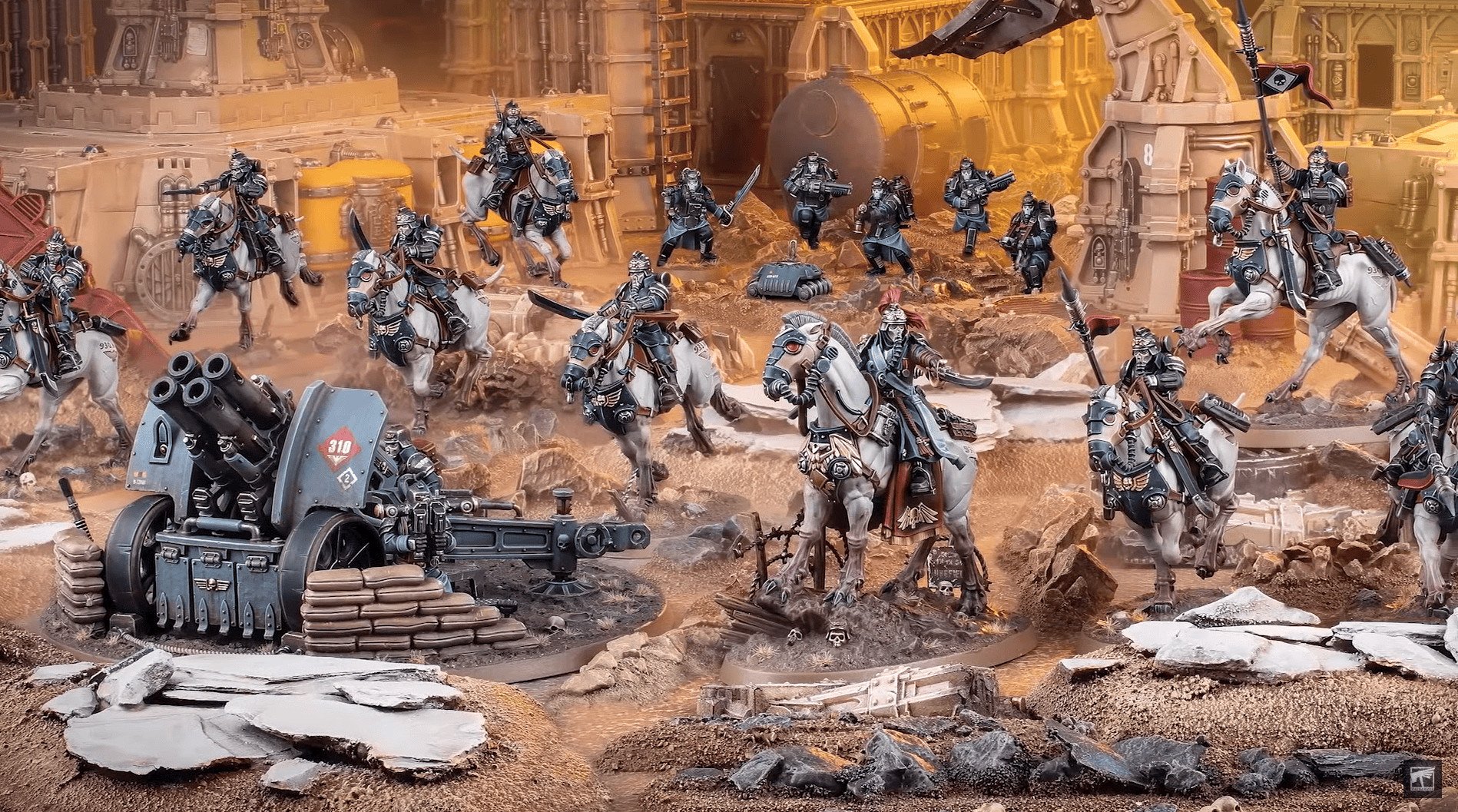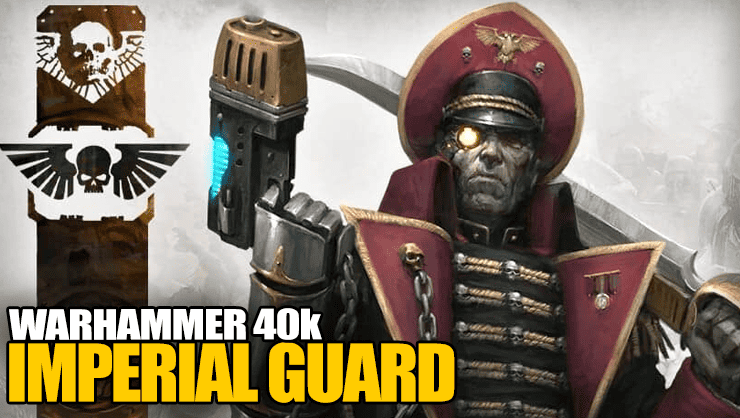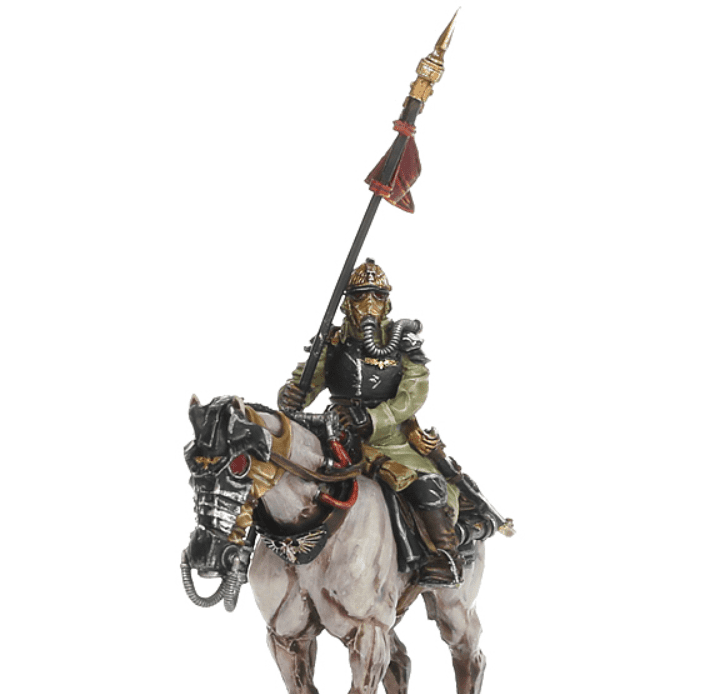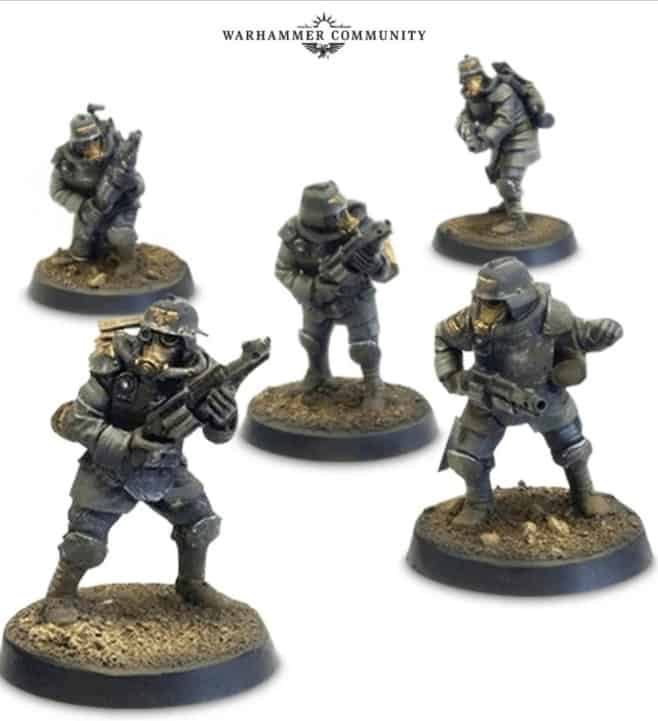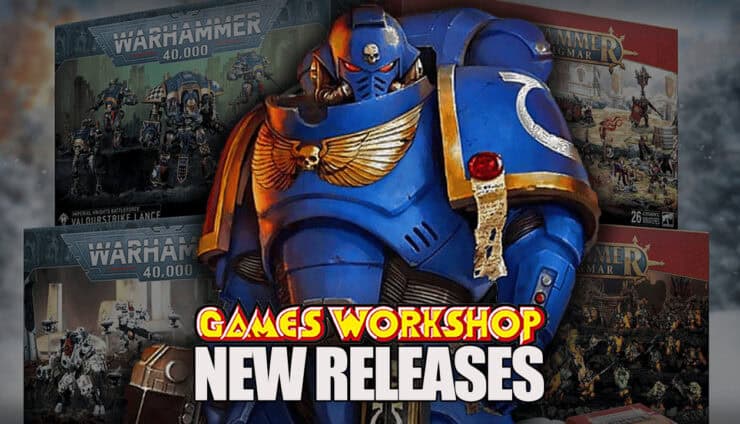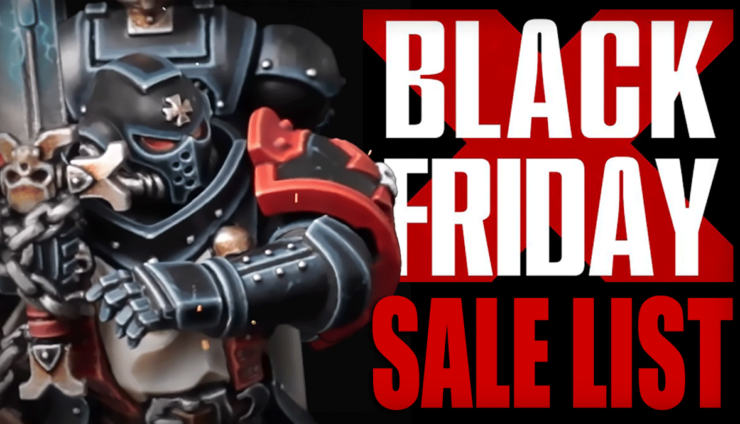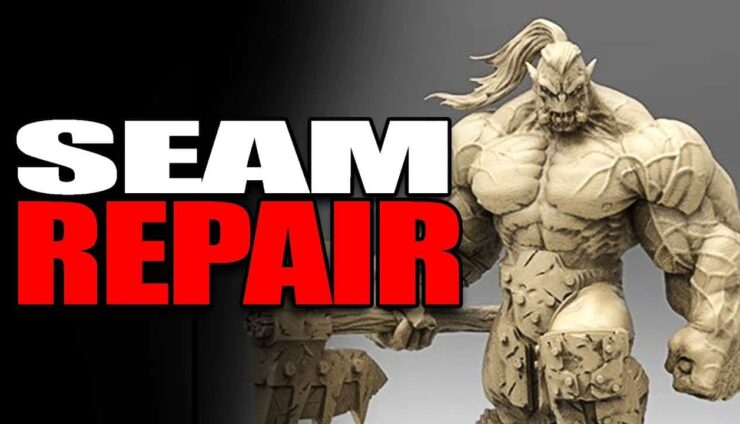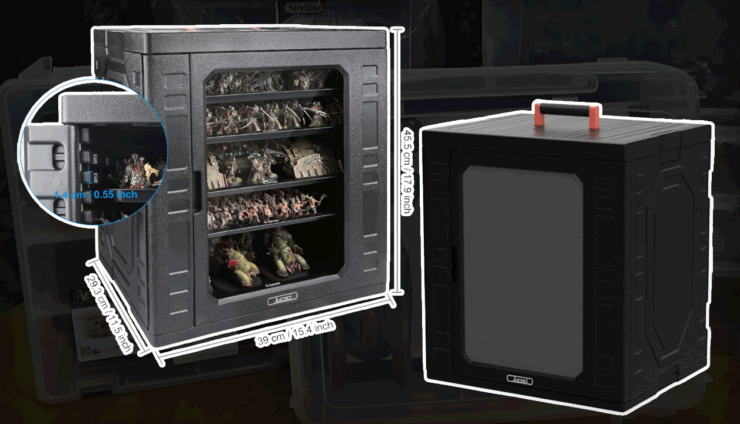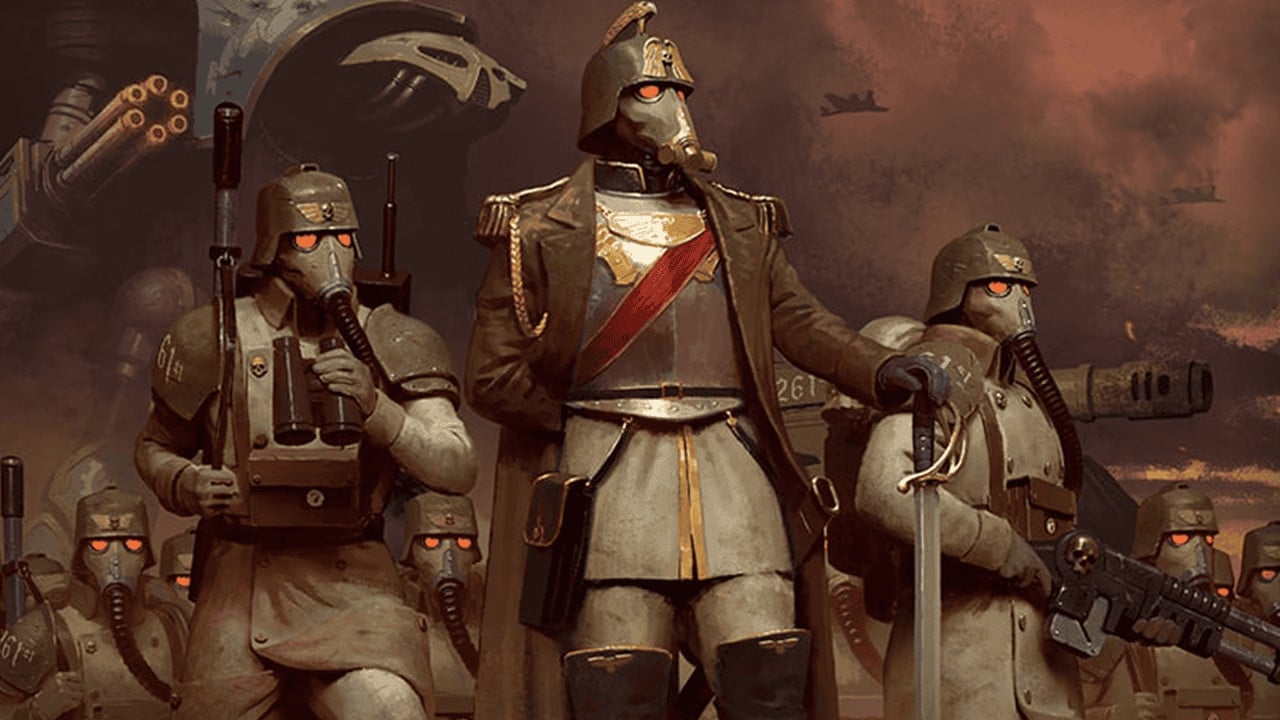 Uncover the strengths, tactics, and background lore of the Death Korps of Krieg; plus learn how to build, play, and master this 40K faction.
Uncover the strengths, tactics, and background lore of the Death Korps of Krieg; plus learn how to build, play, and master this 40K faction.
Updated January 2nd, 2025, by Rob Baer with updated information and links to relevant content.
The Death Korps of Krieg. Just the name conjures up a background of images of gas-masked soldiers marching stoically through the mud, ready to face certain doom with grim determination. These guys don’t flinch, don’t falter, and certainly don’t ask for a day off. But what makes this faction such an iconic force in Warhammer 40k?
In this article, we’re pulling back the curtain on what makes the Death Korps tick—both in their grim lore and on the tabletop. From their fanatical devotion to the Emperor to their trench-toughened army tactics, you’ll find everything you need to outlast the opposition.
Ready to assemble an army that stares down the galaxy’s deadliest foes without so much as a blink? Let’s get to it!
The Masked Kriegsman Troopers

- Who Are the Death Korps of Krieg and background?
- Are Death Korps of Krieg Clones?
- Are Death Korps of Krieg Good?
- How to Build a Death Korps of Krieg Army
- How to Play Death Korps of Krieg in Warhammer 40K
- Death Korps of Krieg Painting and Hobby Tips
- FAQs About the Death Korps of Krieg
Who Are the Death Korps of Krieg?
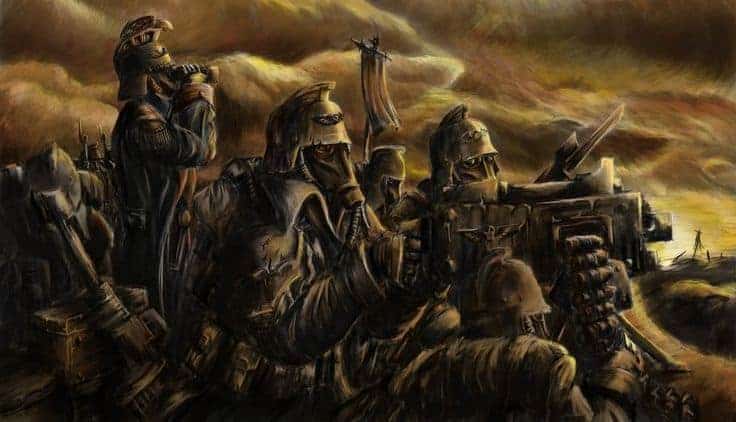
These guys don’t do retreat. Their home planet, Krieg, is basically the universe’s worst vacation spot—a nuclear wasteland that makes a Martian desert look cozy.
Still, for the Death Korps, it’s the perfect training ground. Raised from birth with a singular purpose, these soldiers are conditioned to believe death in service to the Emperor is the only honorable outcome.
The Origins, Background, and Lore of the Death Korps of Krieg
If you’ve taken a glance at the Death Korps and thought, “Wow, these guys look like something straight out of a World War I trench,” you’re not far off. Their gas masks, long coats, and penchant for marching into no man’s land certainly scream “historical aesthetic.”
Was Krieg Settled by Germans?
But, no, Krieg wasn’t settled by Germans from Earth. The planet’s cultural development was a result of its own civil war and the fallout (literal and figurative) that followed.
Krieg’s grim, self-destructive culture has less to do with Earth’s history and more with the Warhammer 40K universe’s love for creating worlds full of suffering and moral ambiguity. After all, the Imperium isn’t known for creating happy places.
Still, you can’t ignore the resemblance. Whether it’s their stoic fatalism or their industrial war machines, the Death Korps certainly wear their grim aesthetic proudly.
The Great Rebellion and the Siege of Krieg
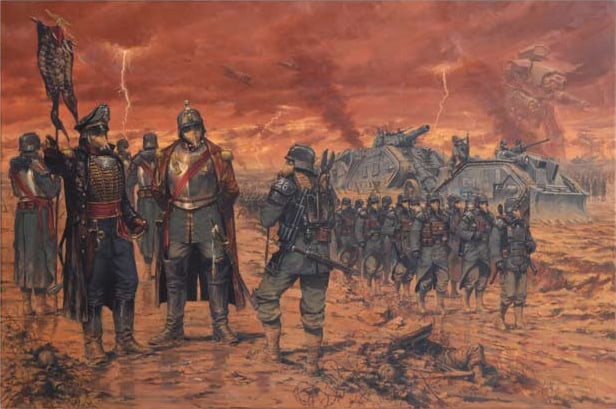
In a rather extreme show of loyalty to the Emperor, Jurten decided the best way to fix the rebellion was to nuke his own planet into radioactive oblivion. The result? An apocalyptic wasteland.
But that’s not all. The fallout ensured that future generations would be raised with an unshakeable sense of duty, dedicating their lives to cleansing the shame of their world’s rebellion with endless service. These soldiers emerged hardened, with trench warfare becoming not just their specialty but their very way of life.
And so, the Death Korps of Krieg were born—masters of attrition and sacrifice. Which would make them perfect to fit into the Cavill Amazon series!
Design Inspiration from World War I
Death Korps of Krieg Aesthetic and Trench Warfare
Let’s be honest, the Death Korps’ look is straight out of a time capsule labeled “World War I, but make it more depressing.” Their uniform—heavy greatcoats, rebreathers, and helmets—captures that industrial-era grit with a grimdark twist. You’d almost expect them to be huddled in muddy trenches waiting for a whistle to go over the top. And that’s exactly the vibe the designers were going for.
Trench warfare defines both the aesthetic and combat strategy of the Death Korps. In the 40K universe, these guys are the ones who dig in deep and wait for the perfect moment to charge headlong into enemy fire, accepting death as inevitable. Gas masks? Check. Endless waves of faceless soldiers advancing on fortified positions? Double check. They embody the brutality and futility of trench warfare, echoing the darkest chapters of World War I.
Influence of Real-World Military Forces on Krieg
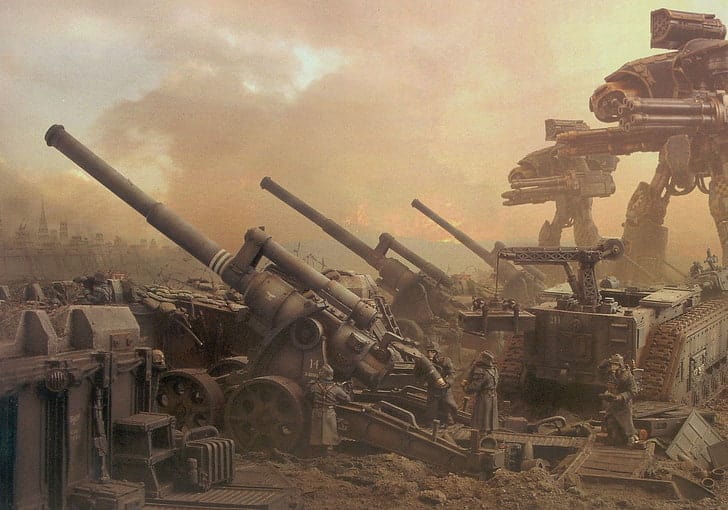
The stoic British soldiers of the Great War also play a role in shaping the Korps’ identity. You can almost see the influence of the famous “Tommy” in the way the Death Korps stoically march toward impossible odds.
And then there’s the artillery—oh, the artillery. The French contribution to this war-inspired mix comes through in the relentless use of big guns. Like the French armies of World War I, the Death Korps believe in pounding the enemy with artillery until all that’s left is rubble and a fine mist of heresy. Their cannons, Earthshaker batteries, and Medusas speak to this devotion to firepower.
So while Krieg wasn’t settled by actual Germans, their tactics and design owe much to the trenches of World War I. From the muddy battlegrounds to the industrial war machines, the Death Korps are a macabre homage to the kind of warfare that grinds both men and morale into the dirt. They’re not just inspired by the past—they take that historical grimness and supercharge it with 40K’s flair for the apocalyptic.
Are Death Korps of Krieg Clones?
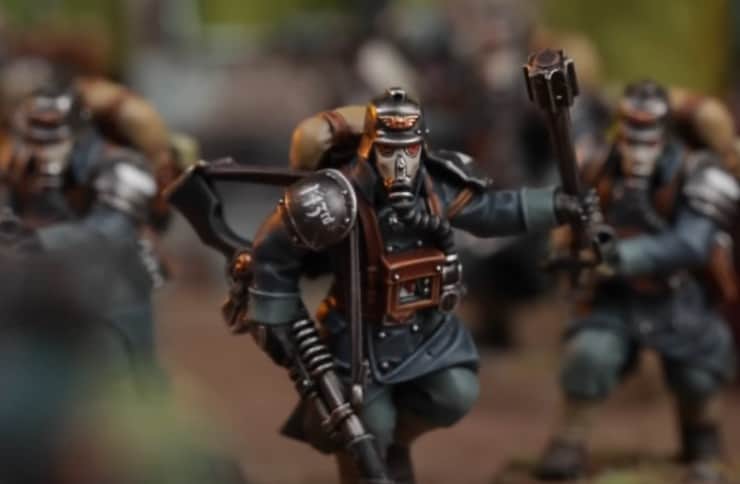
But, sorry to disappoint the conspiracy theorists, the soldiers of Krieg aren’t clones—at least not in the traditional sci-fi sense. Their origins are far more brutal and fitting for the dark future of the 41st millennium.
Genetic Engineering in the Astra Militarum
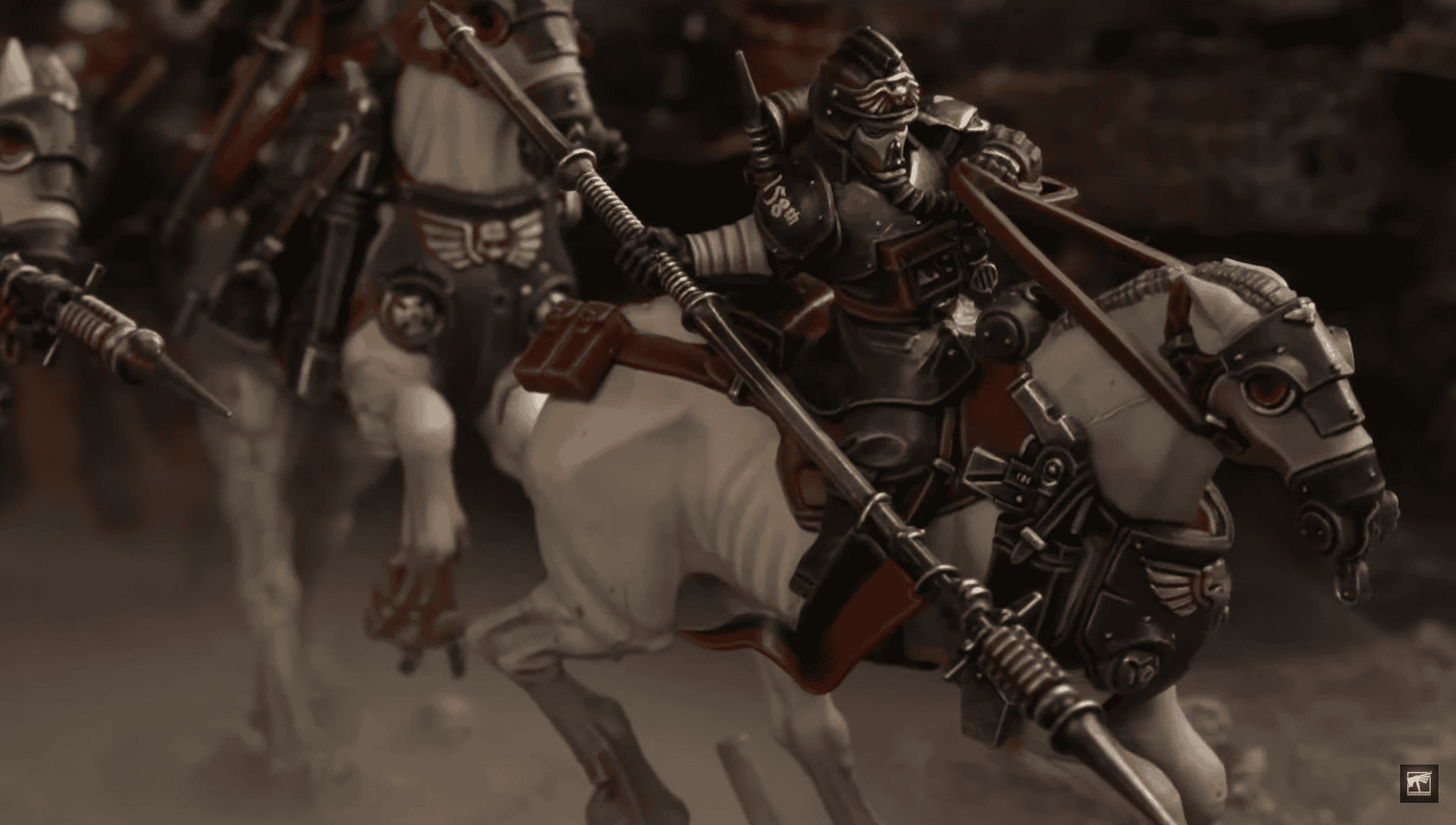
They aren’t grown in family homes or drafted from the latest batch of local hopefuls. Instead, they’re engineered in vats—raised with one purpose: to fight and die for the Emperor.
This process is part of what makes them so eerily disciplined. Vat-grown soldiers aren’t raised in a loving household; they’re drilled with loyalty and obedience from the moment they can comprehend orders. It’s kind of like boot camp, except your entire life is boot camp.
This gives them an almost machine-like dedication to warfare, which often leads people to confuse them for clones. But cloning in 40K is a whole different ballgame, and the Death Korps don’t quite fit into that category.
Cloning Myths and Realities in the 41st Millennium

If you didn’t know better, you’d think they were all produced from the same genetic template—hence the whole clone theory. But, here’s where the difference lies: while they share a similar appearance and attitude, they’re actually the result of selective genetic engineering, not direct copying from one individual.
In the Warhammer 40K universe, clones do exist, but they usually come with some pretty big drawbacks. Whether it’s instability or rebellion (looking at you, Alpha Legion), cloning is a risky business. The Imperium doesn’t trust it, and for good reason.
Vat-grown soldiers, on the other hand, aren’t carbon copies of one another. They may be bred for similar traits, but there’s variation, and more importantly, they’re drilled with discipline from birth.
So while Krieg soldiers may appear interchangeable to the casual observer, they’re not clones in the genetic sense. They’re more like siblings from an incredibly overbearing parent (the Mechanicus), designed for maximum efficiency on the battlefield.
How Vat-Grown Soldiers Differ from Clones
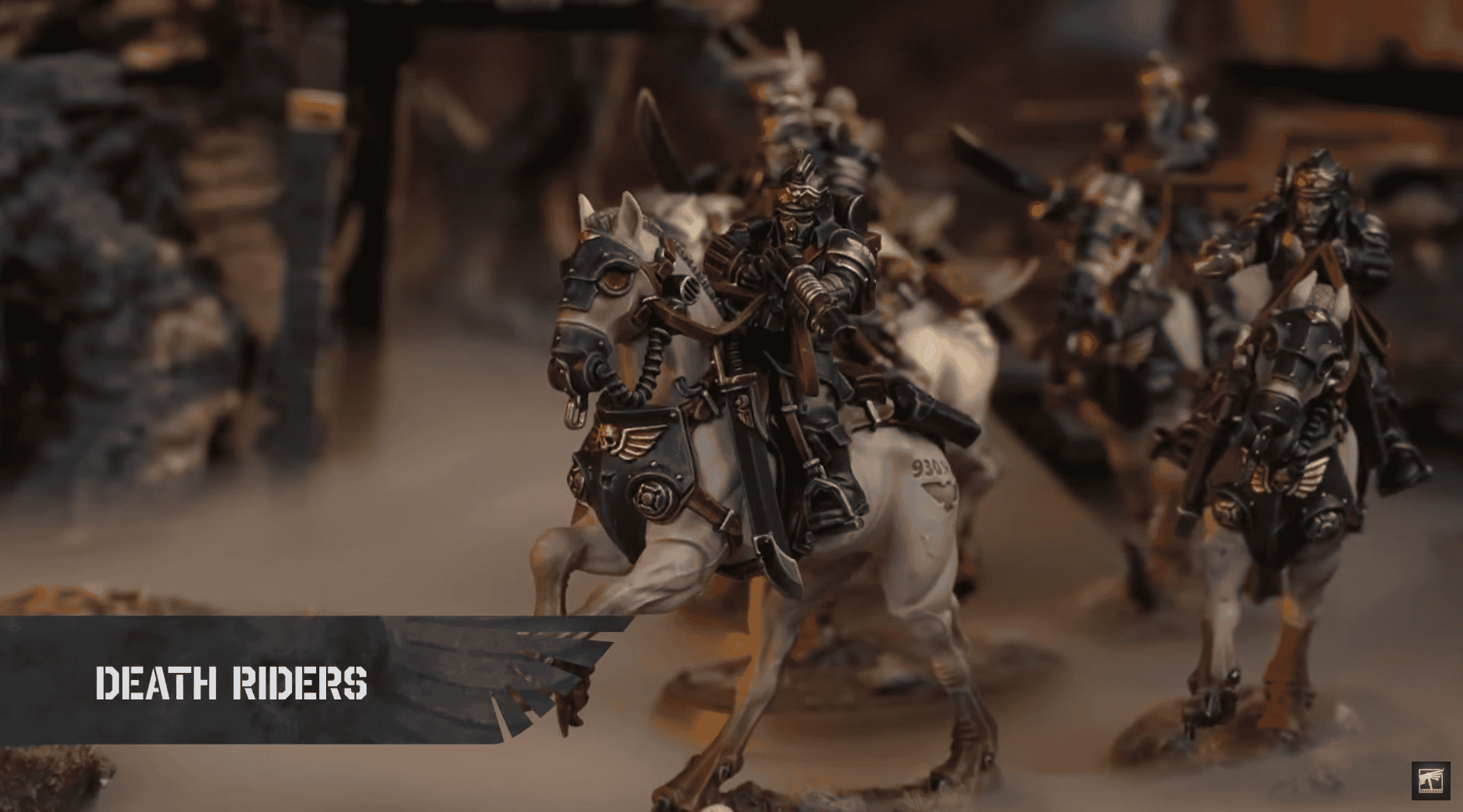
And while that might sound like a great way to pump out endless armies, it comes with a host of problems in the 40K universe. Clones have a tendency to go a bit… off. They’re prone to things like genetic degradation or worse, heresy. And heresy, as we know, is the one thing the Imperium hates more than xenos.
Vat-grown soldiers, however, are more like mass-produced humans. They’re created using a controlled mix of genetic material, not straight-up cloning one person. Think of it like breeding for specific traits rather than copying the same DNA again and again.
This ensures that while every Krieg soldier is tough, disciplined, and obedient, they’re not exact replicas. There’s enough genetic variety to prevent the kind of issues clones tend to run into, but they still maintain the near-identical mindset that makes them so effective.
So, to wrap it up: Death Korps of Krieg soldiers aren’t clones. They’re vat-grown, which means they’re engineered for war but not carbon copies of one another. Their eerie uniformity and absolute loyalty come from brutal conditioning, not from cloning.
The next time someone asks if they’re clones, feel free to correct them with a knowing nod and a reminder of just how grim the Warhammer 40k universe can get. After all, in a galaxy ruled by eternal war, why settle for clones when you can have an entire regiment of vat-grown warriors bred for endless sacrifice?
Are Death Korps of Krieg Good?
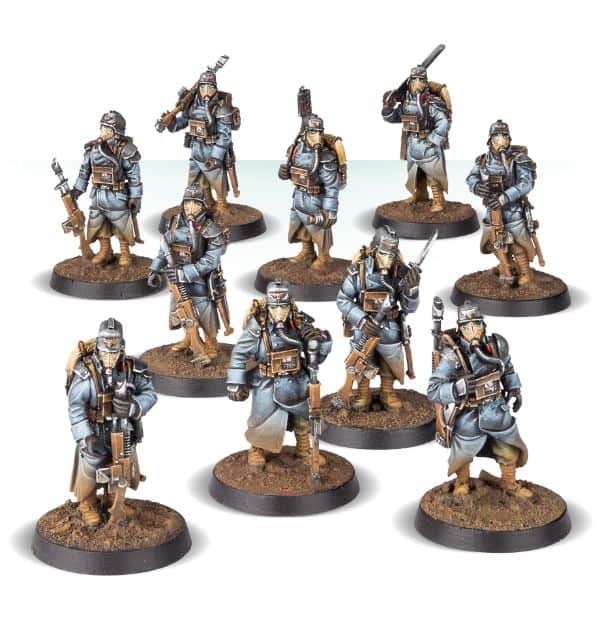
The Death Korps have their strengths, especially when it comes to warfare that drags on endlessly, but they come with some serious challenges too. Let’s break it down.
Strengths of the Death Korps of Krieg on the Battlefield

If the Death Korps had a motto, it would probably be something like, “Why win quickly when you can grind your enemy into dust over several agonizing hours?” These soldiers are masters of trench warfare, a brutal, drawn-out style of fighting where staying power matters more than flashy maneuvers or quick wins.
Think of World War I but with more gas masks, massive artillery strikes, and soldiers who view death as a promotion.
In a game of Warhammer 40K, the Death Korps are perfect for setting up defensive lines that refuse to break. Their strategy revolves around holding ground no matter the cost, often using their vast numbers to slowly wear down the enemy.
They are experts in attrition warfare—meaning if you’ve got the patience, they’ll bleed your opponent dry. By digging in and making life miserable for anyone trying to move them, the Krieg can turn the battlefield into a hellish slog.
And just like in the grim trenches of Earth’s history, they excel at using big guns. Lots of big guns. Artillery support, like Earthshaker Cannons and Medusa Carriages, are their bread and butter.
These weapons rain destruction down on the enemy from afar while the infantry hunker down and wait for the right moment to counter-attack. It’s not glamorous, but in the slow grind of war, it’s devastatingly effective.
Unique Krieg Units
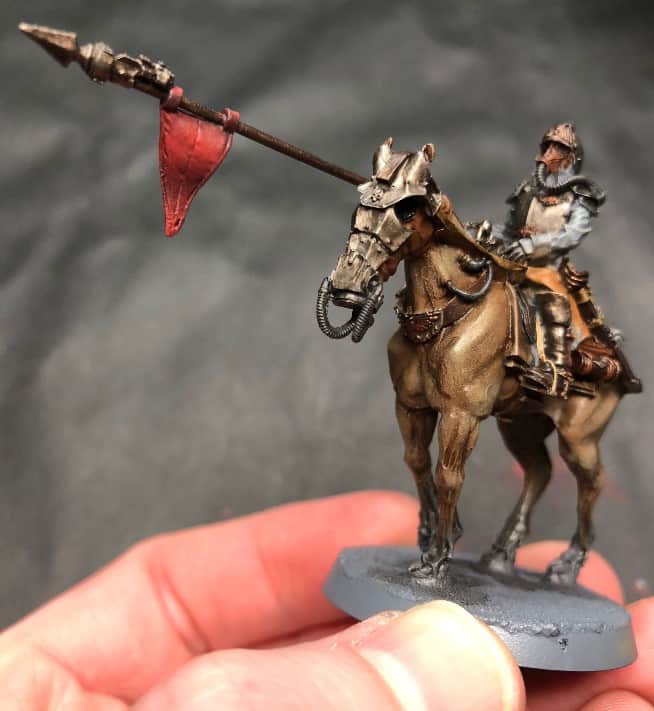
First up are the Death Riders, cavalry units that somehow manage to look both noble and terrifying while charging across a battlefield riddled with explosions and artillery craters.
Mounted on hardened steeds (yes, horses still exist in the 41st millennium), they wield lances with explosive tips, turning any unfortunate foe into a crater.
Then there are the Medusa Carriages and Earthshaker Batteries, artillery pieces that are basically mobile nightmares for your opponent. The Medusa, with its siege cannon, can punch through even the toughest armor, while the Earthshaker is perfect for turning enemy strongholds into rubble.
If your idea of a good time is watching your enemy’s carefully laid plans crumble under a barrage of shells, these units will not disappoint.
Of course, the core of any Krieg army is its infantry. These guys are armed with lasguns and the grim determination to die in droves if it means victory.
They might not look flashy, but when they’re marching through no man’s land under a hail of enemy fire, they get the job done—often at great cost.
Weaknesses and Challenges of the Krieg Faction
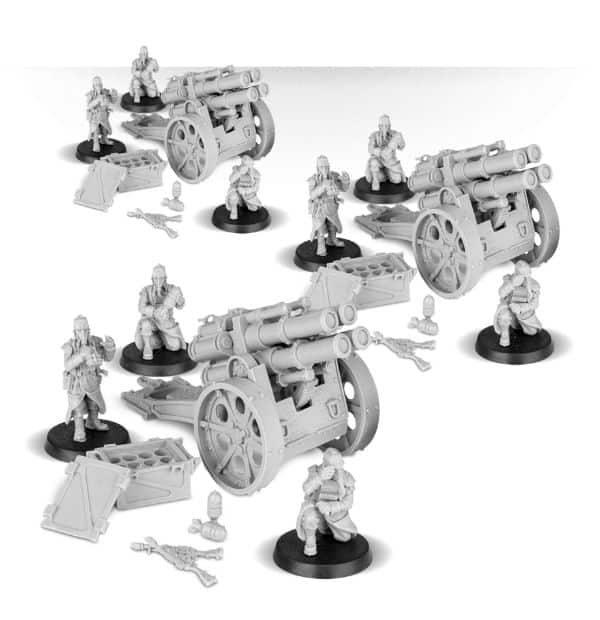
Sure, it’s great when you can sit back and let the enemy come to you, but mobile, fast-paced opponents can cause problems. Armies that rely on rapid movement, deep strikes, or surprise tactics can outmaneuver the static Death Korps defenses.
There’s also the issue of their units being pretty specialized. Yes, artillery and infantry are fantastic for long, grinding battles, but they don’t always shine in other types of engagements. If you’re looking for speed or flexibility, you won’t find it here.
The Death Korps aren’t the army for those who want flashy heroics or fancy maneuvers. They prefer slow, brutal wars of attrition—and sometimes, you just need a bit more dynamism on the battlefield.
Lastly, let’s not ignore the cost. Fielding a Death Korps army can be expensive, both in terms of points and in real life (looking at you, Forge World prices). Many of their best units are resin models, which means you’ll need to invest some serious cash to get a full force on the table.
And even once they’re assembled, they’re not cheap in-game either—artillery and cavalry tend to come with a hefty points cost, meaning you won’t always have the largest army on the table.
How to Build a Death Korps of Krieg Army

Whether you’re drawn in by their relentless trench warfare or their spooky gas masks, building a Krieg army is a labor of love (with a side of wallet pain). Let’s dive into the options for getting your hands on these models and how to put together your own army of grim-faced, trench-digging badasses.
New DKoK Plastic Models
The Death Korps of Krieg, known for their relentless trench warfare and stoic commitment, are getting a full wave of plastic models for release in 2025.
This long-awaited shift from Forge World resin to plastic will mark a significant expansion for the Astra Militarum, offering fans a comprehensive, updated range of miniatures to enhance their armies. Here is a quick breakdown of what to expect in the rework, along with the remaining rumors…
Confirmed New Models for Death Korps of Krieg 2025 Release:
- Death Korps of Krieg Army Launch Box Set is complete with an alternative art codex cover and new models.
- Death Korps Infantry Squad (may just be a variant of the Kill Team release, as this army pic seems to indicate)
- Plastic Death Riders (cavalry units)
- Command HQ Squad featuring a new banner bearer)
- Engineers/Sappers (minefield deployment specialists)
- Heavy Weapons Teams (It would make sense to get heavy weapon teams)
- Artillery Units (new plastic variants)
- Character Model (Lord Marshal Varnan Dreir)
Rumored New Models
- Tank Variants (potential new and redesigned tank models that were DKoK specific, such as Malcador, Gorgon, Earth Shaker, and Mars Pattern Russ)
- Character Models (updated versions of key Krieg officers and leaders)
- Minefield Kit (potentially as a deployable terrain piece)
- Banner Bearer with Battle-Damaged Flag (the advent engine teaser, is part of command squad)
- Specialized Units (speculated new additions, such as elite or unique Krieg squads as they did with the Kill Team additional sprue)
Where to Buy Death Korps of Krieg Models
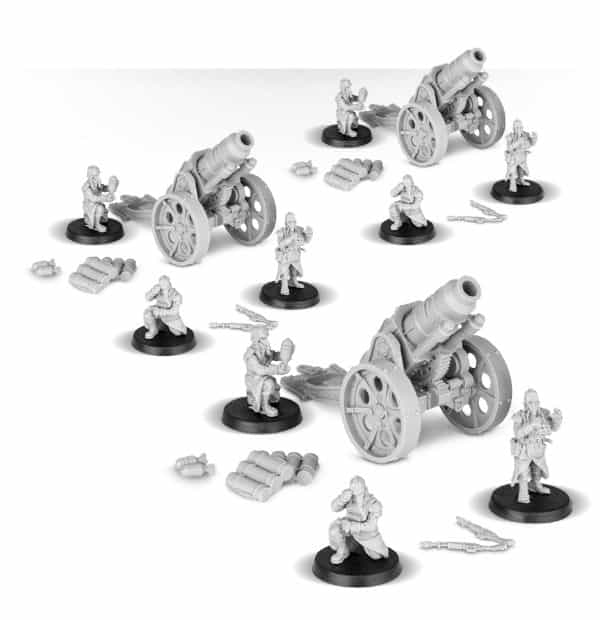
From the standard Death Korps infantry squads to their legendary heavy artillery like the Earthshaker Cannons and Medusa Carriages, this is your one-stop shop for all things Krieg. Soon, though, you will be able to get the majority of the units in plastic!
Games Workshop Plastic Models

The main draw here is the Krieg Infantry Squad—your standard troopers that come packed with enough weapons and poses to keep things interesting. However, there are tons of rumors and reveals from GW about the new plastic minis (and confirmed as shown above).
The Kill Team Veteran Guardsmen box is another fantastic option. Not only does it give you some of the iconic gas-mask-wearing troopers, but it also comes with a ton of special options for weapons and equipment. Plus, it’s great for building either a Kill Team or integrating the models into a full Astra Militarum army. If you’re looking for a simpler way to start your Krieg collection, Games Workshop’s plastic kits are an excellent entry point.
Second-Hand and Third-Party Alternatives
Now, let’s talk about the second-hand market. If you’re scouring sites like eBay, you might stumble across some out-of-production Krieg models or even rare ForgeWorld kits. But proceed with caution: there are plenty of recasts floating around, which are basically pirated copies of official models.
Some collectors turn a blind eye to recasts due to their lower prices, but it’s worth noting that they’re not legal and can hurt the development of future models. If you’re determined to go this route, always ask for proof of authenticity from sellers—look for original packaging or receipts.
For those looking to add a unique twist to their army, third-party manufacturers like Kromlech and Anvil Industries are fantastic for alternative heads, weapons, and bits. These companies don’t sell straight-up Krieg models, but they offer plenty of parts that work beautifully for customizing your soldiers.
Want to give your troopers a slightly different look or outfit your vehicles with cool new accessories? These third-party bits will get your creative juices flowing.
- Games Workshop - Warhammer 40,000 - Kill Team: Veteran Guardsmen
- An elite, hard-hitting, durable option for Astra Militarum armies, and a Kill Team in a box
- Builds 10 Veteran Guardsmen, or 10 standard Infantry
- A fantastic way to add variety and character to your Astra Militarum force
- These miniatures are supplied unpainted and require assembly – we recommend using Citadel Plastic Glue and Citadel Colour paints.
Last update on 2025-04-24 / Affiliate links / Images from Amazon Product Advertising API
Assembling and Customizing Death Korps Models
Working with Resin: Tips and Tricks
Alright, you’ve bought your ForgeWorld resin models. Now comes the fun part—assembling them without accidentally gluing your fingers together. Working with resin is a bit of a different beast compared to plastic.
First, you’ll need to wash all the parts in warm, soapy water to get rid of the release agent that can prevent paint from sticking. After that, you might find some bent pieces, but don’t panic—resin can be heated with warm water and gently reshaped.
When it comes to gluing, make sure you use super glue, as plastic glue won’t work on resin. And take your time—resin models tend to have small, delicate parts, and nothing ruins a build like rushing through it. Finally, resin models love to gather fine details, so once you’ve assembled them, consider priming with a thin coat of spray primer to catch every intricate bit.
Customization Options with 3rd Party Bits
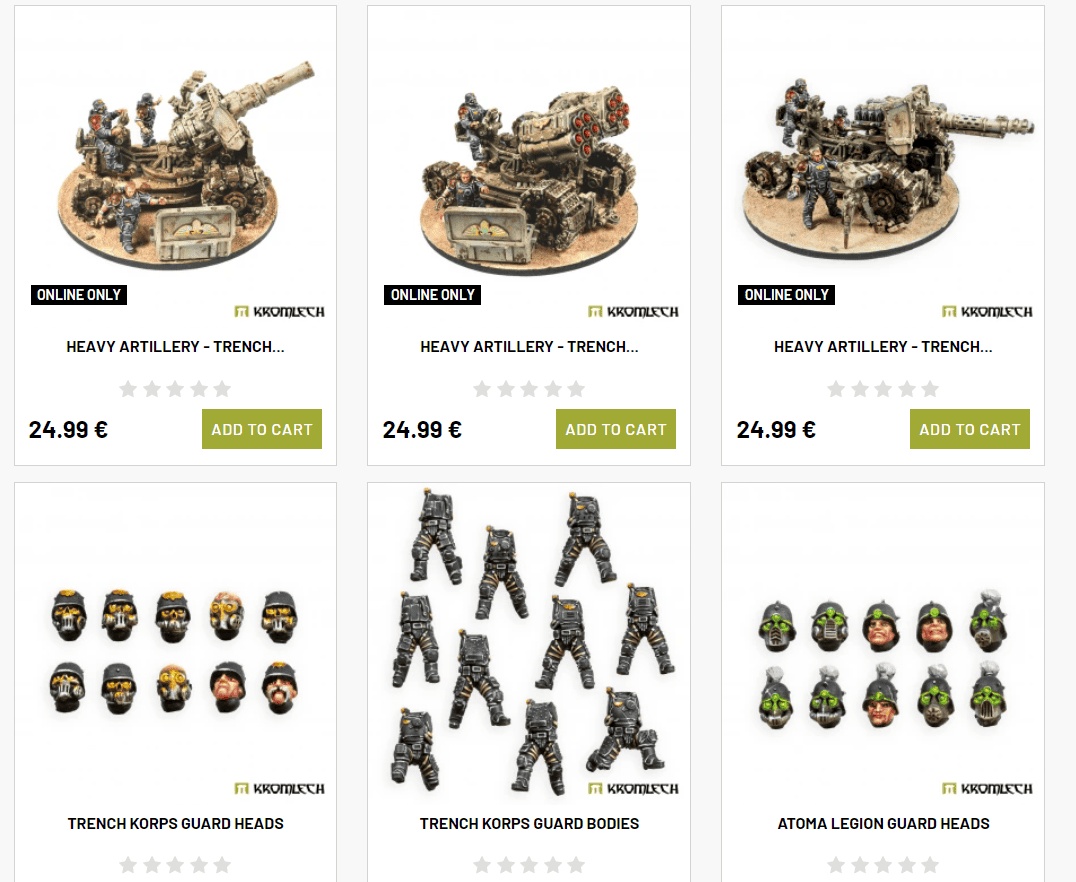
Whether you want to swap out helmets, add new weapons, or trick out your vehicles with extra armor or gear, these bits can make your army feel one-of-a-kind.
For example, want to turn a boring Chimera into a full-on, trench-toughened war machine? You can pick up custom sponsons, heavy weapons, and even alternative crew figures to make your tank feel like it’s been fighting for decades.
If you’re looking to really lean into the World War I vibe of the Krieg, these third-party kits have got you covered.
How to Play Death Korps of Krieg in Warhammer 40K
So, you’ve got your gas-masked soldiers all assembled, and now you’re ready to send them off to fight in the Emperor’s name. Playing the Death Korps of Krieg is a bit like orchestrating the perfect symphony of explosions, attrition, and stoic sacrifice.
If you’re after lightning-fast skirmishes and heroic one-man armies, you might want to reconsider. But if you enjoy the slow, methodical grind of wearing down your enemies with artillery and trench warfare, the Death Korps are exactly your speed.
Rules and Datasheets for Death Korps of Krieg
If you’re fielding a Death Korps of Krieg army, you’re essentially playing as part of the Astra Militarum (the old Imperial Guard, for those with a long enough gaming background). This means most of the rules for standard Guard units also apply to your Krieg forces.
In terms of infantry, tanks, and general battleline units, Krieg plays similarly to other Astra Militarum regiments. You’ll have access to trusty old Chimeras, Leman Russ tanks, and of course, those glorious blobs of infantry ready to be thrown into the meat grinder. Check out our full how-to-play guide on the army here!
Krieg units can use many of the same tactics and strategies as standard Astra Militarum armies, but their real flair comes in their flavor units and special rules, which take things from “standard” to “I hope you like the smell of gunpowder and misery.”
Forge World and Legends Rules
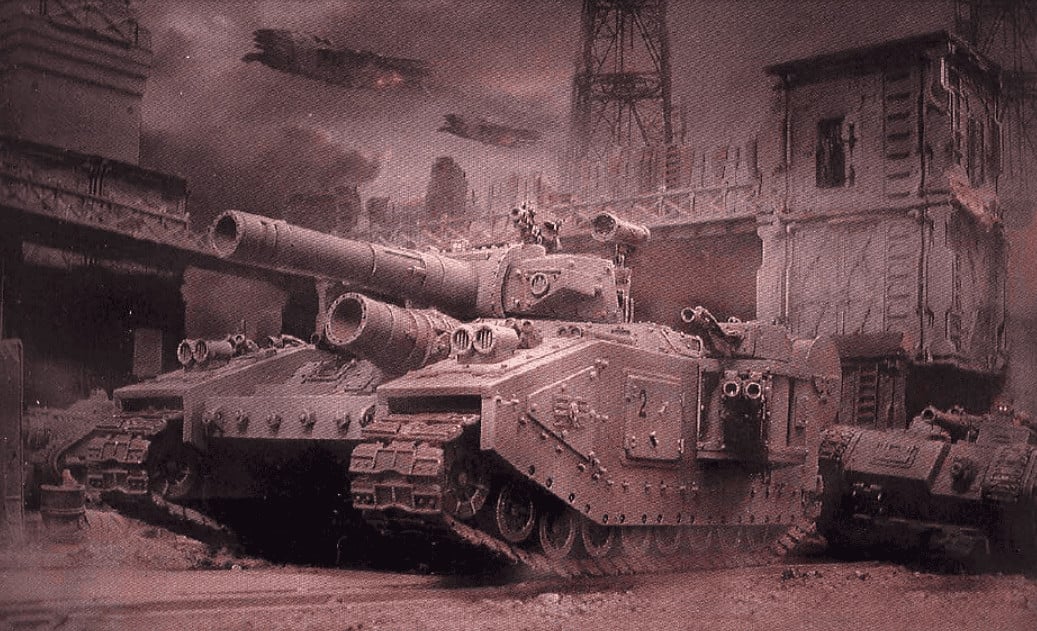
There’s just something about watching artillery shells rain down on your opponent’s prized units that makes playing Krieg so much fun. These rules help emphasize the long-range, trench warfare theme the Death Korps are known for.
Then, there’s the Legends section—where all those old-school, no-longer-tournament-legal units live on in their glory. These are the units you bring out when you want to play for narrative, not for trophies.
Think massive, out-of-print super-heavies and obscure infantry units that only the most die-hard fans will recognize. Just don’t expect them to be legal in most tournaments. You can download all the rules until the codex comes out here!
Tactical Strategies for the Death Korps
 Defensive and Attrition Tactics
Defensive and Attrition Tactics
If there’s one thing the Death Korps of Krieg excel at, it’s sitting tight and outlasting the opposition, no matter the lead-up or background of the battle. They are the masters of defensive play. Picture them digging into trenches, taking a hammering from all sides, and still standing with a lasgun in hand and a glint in their eye (well, maybe not—you can’t see through the gas masks).
The strategy here is to hold ground, protect key objectives, and weather the enemy’s storm while softening them up with artillery barrages.
What makes this army so effective in defense is their ability to take losses and keep fighting. Attrition warfare is a Krieg specialty, meaning you can sacrifice waves of infantry, knowing that for every ten guys you lose, you’ll have another fifty ready to step up.
Use fortifications to your advantage, and don’t be afraid to trade bodies for time as you grind down your opponent’s forces. The longer the battle drags on, the better your chances.
Combining Artillery and Infantry for Maximum Impact
The Krieg Way is a glorious combination of foot-slogging infantry and backline artillery. It’s all about balancing these two elements for maximum devastation. Artillery like Earthshaker Cannons and Medusa Siege Guns are your bread and butter, pounding the enemy from afar while your infantry advance or hold key positions. The trick is to soften up enemy units with well-placed barrages before sending in your infantry to finish the job.
Think of the artillery as the hammer and your infantry as the anvil. Your goal is to pin the enemy in place with your defensive positions while your artillery does the heavy lifting.
By the time your opponent reaches your front lines (if they ever do), they’ll be a shadow of their former selves, ripe for a counter-charge or a finishing volley from your infantry. Proper coordination between these two forces is what makes a Krieg army truly terrifying on the tabletop.
Competitive vs Narrative Play for Krieg
 Fluff-Based Army Lists
Fluff-Based Army Lists
For those who play for the lore and love the grim aesthetic of Krieg, fluff-based army lists are where you’ll have the most fun. These lists aren’t optimized for winning tournaments—they’re built to tell a story.
You’ll want to pack in as many Death Riders as possible, stack up the Earthshaker Carriages, and field massive waves of infantry to recreate the brutal trench warfare the Death Korps are known for.
Fluff-based lists focus on making your army feel like a true representation of the Krieg forces, not necessarily the most competitive thing on the table.
This means taking thematic units like artillery and cavalry, even if they aren’t the most points-efficient choices. It’s all about the aesthetic and getting into the grim mindset of endless attrition.
Competitive Krieg Army Lists
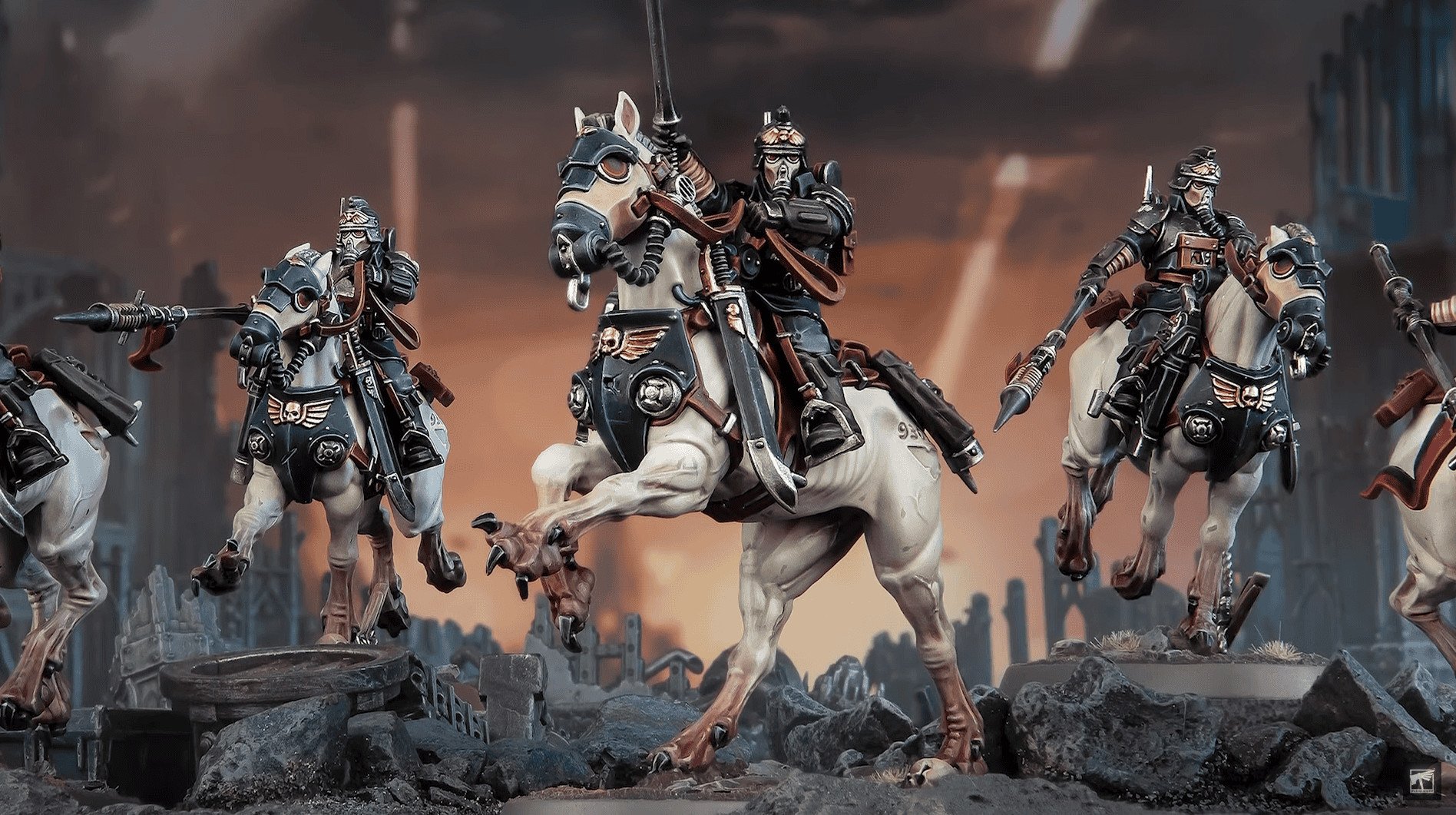
While artillery is still a great choice, you’ll likely want to focus on more mobile elements of the Krieg, combining tanks and infantry for an aggressive push. Units like Death Riders become valuable not just for their fluff, but also for their speed and melee punch.
You’ll want to balance cost-effective infantry for objective holding with powerful artillery or tank units to provide long-range support. In competitive environments, the key is making sure your Krieg forces can adapt to the meta while still holding onto their core strengths—solid defensive capabilities and overwhelming firepower.
You might even dabble in Astra Militarum units outside the Krieg-specific range to bring some extra flexibility to your list.
Death Korps of Krieg Painting and Hobby Tips
So, you’ve assembled your Death Korps of Krieg, and now it’s time to get them painted and the backgrounds done. But hold up—these aren’t your average Astra Militarum grunts.
They deserve more than a quick base coat and wash. The Krieg have a rich, gritty aesthetic that draws heavily from World War I trench warfare, so let’s talk about how to bring that vibe to life on your models.
Painting a Death Korps of Krieg Army

Historical and Thematic Color Schemes
When painting your Death Korps of Krieg, channel your inner history buff and think, “WWI background, but with more skulls and a dash of 41st-millennium grit.” Thematically, you want your army to look like it’s been slogging through mud, ducking artillery shells, and staring down a no-man’s-land full of barbed wire.
The classic scheme for Krieg is a muted, almost drab color palette. Think greys, browns, and faded greens. This gives them that weathered, war-weary look. A popular choice is a base of German Field Grey or British Khaki, with browns and darker greens used to break up the monotony.
Their iconic gas masks can be painted in lighter greys or even an off-white to make them stand out just a bit more, while still keeping that grimy look.
For the coats, dark browns or even charcoal greys can really sell the “I’ve been in this trench for months” aesthetic. And don’t forget to weather those coats!
A bit of dry brushing with lighter brown can make them look like they’ve been dragging through mud all day, which is exactly what you want. Check out this awesome tutorial for great grays!
Weathering Techniques for a Realistic Look

Start with a simple dry brush technique to bring out the edges of your models. Use a light grey or tan over the armor and clothing to simulate dirt and grime building up. You can even add some mud effects to the lower parts of the models, especially on boots and the bottom of those long, heavy coats.
Next, get a sponge (or a torn-up piece of foam) and lightly dab metallic paint onto helmets, guns, and other metal surfaces to create the effect of chipped paint. This makes it look like the gear has been battered, worn, and repaired a hundred times.
For an even more detailed effect, use oil washes or enamels to create streaks of grime and rust. This really sells the idea that these soldiers have been out in the field, exposed to the elements and battlefield conditions. A thin line of rust around rivets or bolts on their weapons adds that extra bit of realism to your Krieg. Learn how to weather here!
Advanced Customization and Dioramas
Check out this awesome custom army!
Diorama Ideas for Krieg
The Death Korps of Krieg are practically begging to be part of a diorama. Their whole aesthetic screams “mud, trenches, and barbed wire.” If you’re planning to go all-in on your display, consider creating a trench warfare diorama. Start by building a textured base that mimics a muddy battlefield. You can use corkboard or even modeling clay to create raised edges that represent the trenches.
Add some barbed wire fences, sandbags, and wooden planks to create that lived-in, war-torn vibe. For extra authenticity, sprinkle some crushed slate or small rocks around to represent debris from artillery shelling.
Don’t forget to throw in a few broken weapons or spent shell casings for good measure. A diorama like this will really capture the essence of the Krieg’s endless, grinding war against the enemies of the Imperium.
FAQs About the Death Korps of Krieg
 Are Death Korps of Krieg Clones?
Are Death Korps of Krieg Clones?
Nope, not clones! Though they act with the eerie coordination of a hive mind, and their background might suggest it, the Death Korps of Krieg are actually vat-grown soldiers. They’re raised in massive batches, conditioned from birth to be utterly loyal to the Emperor. For more details on the whole cloning confusion, check out the article linked earlier.
Are Death Korps of Krieg Good in Warhammer 40K?
Absolutely—if you like slow, methodical armies that grind the enemy down over time. The background of the Death Korps of Krieg lets them excel in attrition warfare and defensive strategies, with a strong focus on artillery support. They might not be the flashiest army, but if you want to outlast your opponent and make them feel the weight of every decision, the Death Korps are a great choice.
Was Krieg Settled by Germans?
Not exactly. While the Death Korps are heavily inspired by WWI German soldiers in terms of their aesthetic, trench warfare, and grim determination, Krieg is a planet within the Warhammer 40K universe. The people of Krieg are products of their world’s history, not Earth’s. Their story is more about rebellion, nuclear devastation, and redemption through endless warfare than anything specifically German.
Conclusion: Why the Death Korps of Krieg Remain a Fan-Favorite in Warhammer 40K
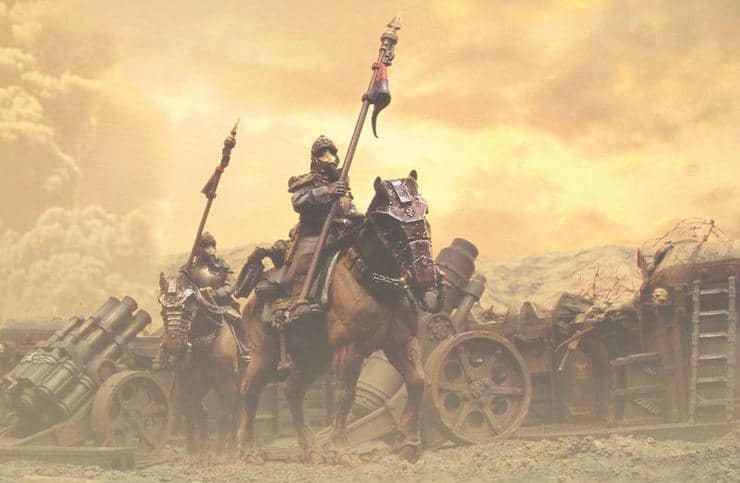
Whether you’re drawn in by the lore, their background, the aesthetic, or the playstyle, the Death Korps of Krieg remains one of the most compelling forces in the 40K universe. They might not win flashy, but they always win dirty.
All the Latest Warhammer Rules & Model Rumors
What do you think about the new plastic Warhammer 40k Death Korps of Krieg Death Riders along with their models, rules, and background lore?
